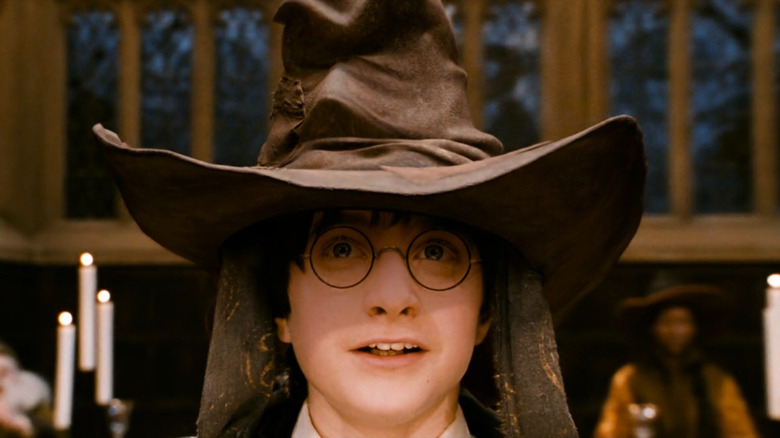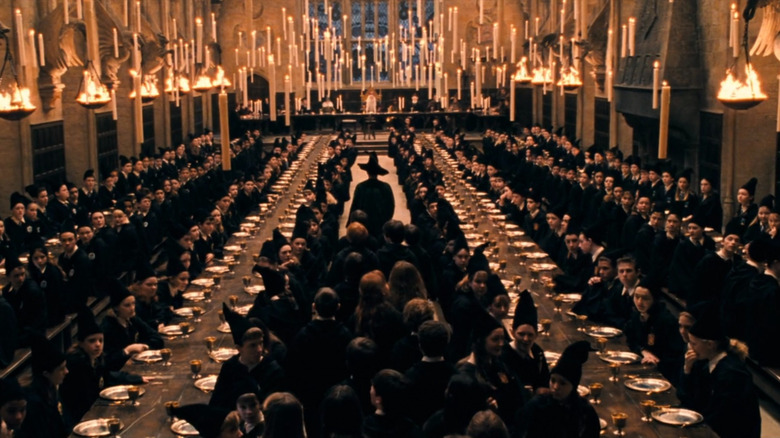A Flaming Mishap Had Harry Potter's Entire Cast And Crew Fleeing The Great Hall
Revisiting the "Harry Potter" films in the last few years has been a bit of a challenge, given ... well ... its author. But since thousands of people put their hearts and souls into that series for a decade, I cannot help but get swept up in it all whenever I've decided to throw them on, even the entries that I don't think are all that great. What comes into focus the more I see the films is that the MVP of the franchise is production designer Stuart Craig.
Because most big-budget blockbusters now are either filmed in front of a green screen in a parking lot in Atlanta, Georgia, or on a soundstage with a Volume screen and light system, seeing something constructed like Hogwarts — with its massive scope and intricate detail — makes the "Harry Potter" films feel bigger than just about everything else. Obviously, things are augmented with visual effects, but so much of what is on-screen is actually there.
After all, the first film in the series, "Harry Potter and the Sorcerer's Stone" (or "Philosopher's Stone" for you Brits), came out in 2001. A mostly virtual production was basically just for George Lucas' experimentation. Nowhere is the power of the physical more evident than in the Great Hall of Hogwarts. It's a set that feels impossibly huge, with four massive dining tables stretching all the way down it to make it look even longer than it is. And, of course, you have the hundreds of floating candles hovering over it all. In the beginning, even those candles were actually physically hanging above the set. That is until they became quite a hazard.
Caution: falling candles
When I first heard that Stuart Craig and director Chris Columbus wanted to use real candles in "Harry Potter and the Sorcerer's Stone," I assumed that they just meant having physical candles hanging above them, but instead of a wick and flame, there would be a light bulb. As it happens, they wanted these candles to be actual candles, with real flames. This was the plan when production started. Unfortunately for them, they seemed to forget that fire burns things. Speaking with the New York Times, Chris Columbus recalled the chaos the candles caused:
"When all the kids file into the Great Hall for the first time, we see hundreds of floating candles in the air. And then something horrible happened — the flames of the candles started to burn through the clear string holding them and started to drop! We had to get everybody out of the set — and then we shot it two more times, telling ourselves, 'We're just going to add C.G.I. candles.'"
As much as I love the idea of real candles being used in the Great Hall set, you have to put the safety of your cast — especially a cast of children — first. Granted, Daniel Radcliffe and the kids weren't too worried. "I'm sure Chris was more stressed out by it, but as a kid, you're like, 'This is really funny,'" Radcliffe said to the New York Times, but of course, children have never been the best judge of what is safe. In the end, the CG candles look totally fine, and considering the ceiling of the Great Hall is an ever-changing CG creation, it all fits together. What is most important is what's on the ground, and the reality Stuart Craig created allows for those digital augmentations to feel just as real.

